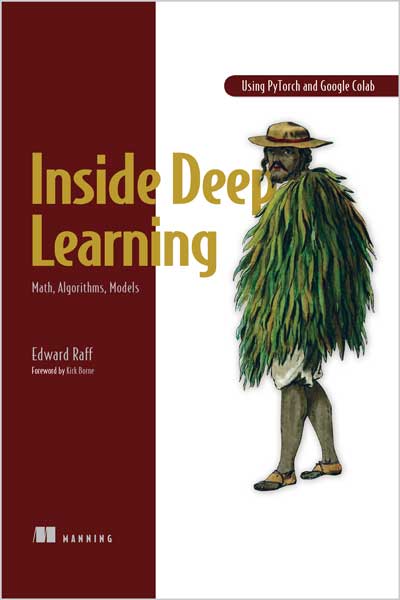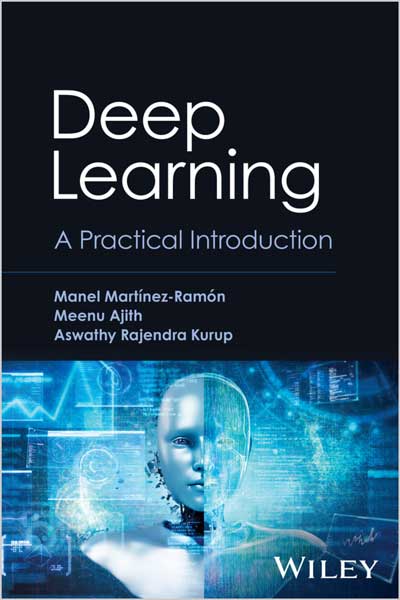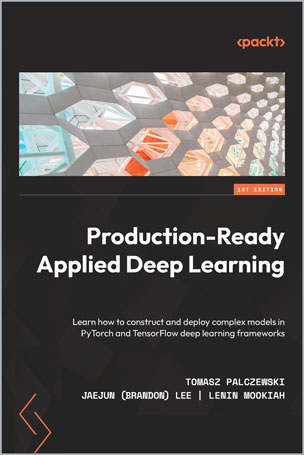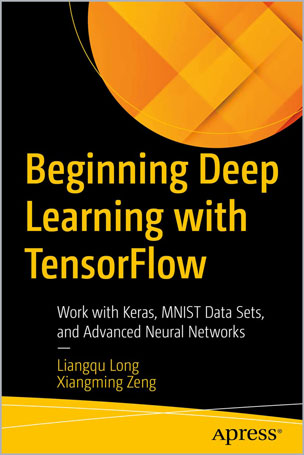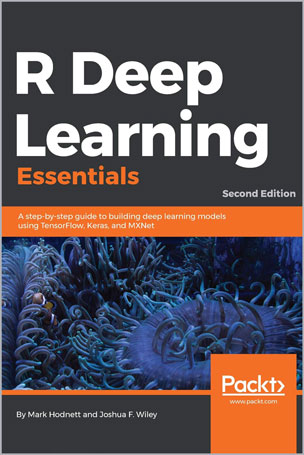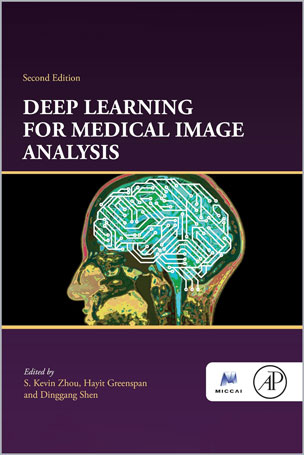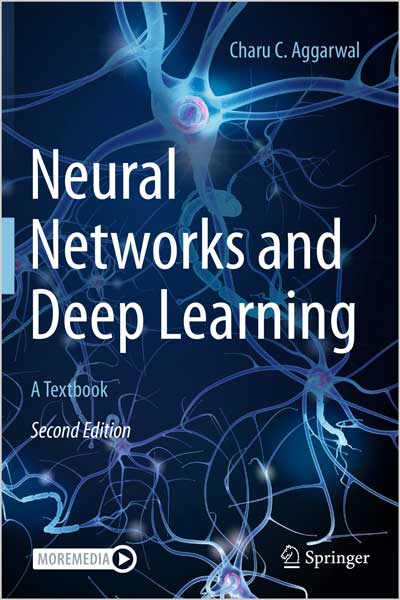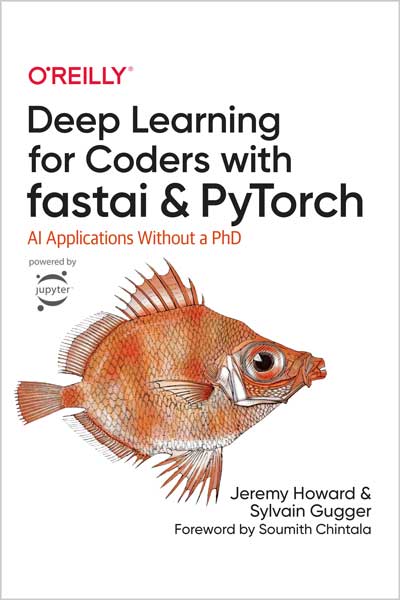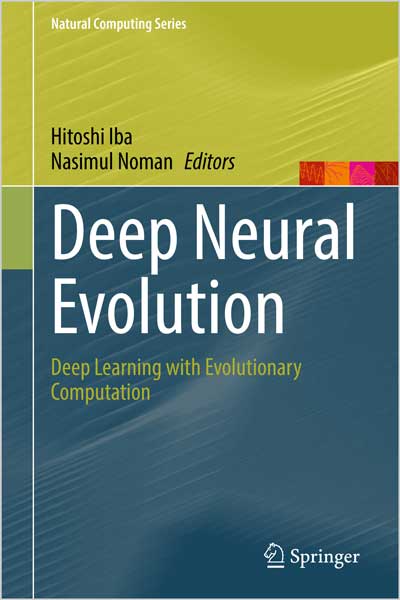Adaptive Computation and Machine Learning series
Ian Goodfellow, Yoshua Bengio, Aaron Courville
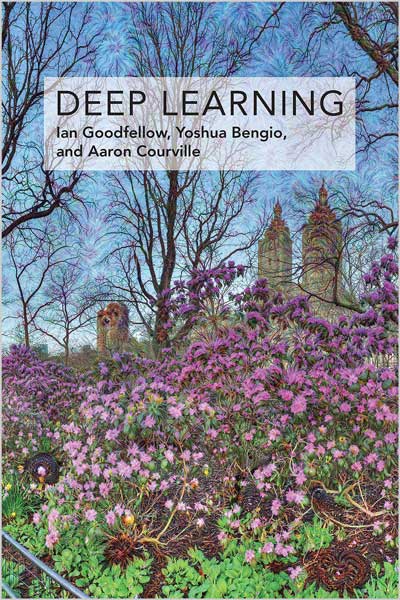
#Deep_learning
#ML
#Machine_Learning
#OpenAI
#Elon_Musk
#software_engineers
#linear_algebra
#network
🧠 این کتاب یه جورایی آچار فرانسه یادگیری عمیقه! از صفرِ صفر، یعنی ریاضیات و مفاهیم پایهای شروع میکنه، میره سراغ تکنیکهای خفنی که الان تو شرکتهای غول مثل گوگل و متا استفاده میشه و در آخر هم یه سرک میکشه به آینده و پژوهشهای این حوزه.
🚀 ایلان ماسک (مدیرعامل تسلا و اسپیسایکس، همبنیانگذار OpenAI):
«کتاب “یادگیری عمیق” که توسط سه تا از غولهای این حوزه نوشته شده، تنها کتاب جامع و کامل در این زمینه است.»
🤖 یادگیری عمیق چیه اصلاً؟ خیلی ساده بگم، یه شاخه از یادگیری ماشینه که به کامپیوتر یاد میده از «تجربه» یاد بگیره و دنیا رو توی یه «سلسله مراتب از مفاهیم» درک کنه. یعنی چی؟ یعنی کامپیوتر خودش از روی دادهها دانش کسب میکنه و لازم نیست یه آدم بشینه تمام قوانین رو بهش دیکته کنه. این سلسله مراتب مفاهیم به کامپیوتر اجازه میده چیزای پیچیده رو با ترکیب کردن مفاهیم سادهتر یاد بگیره. اگه این سلسله مراتب رو مثل یه گراف بکشیم، کلی لایه در لایه و عمیق میشه (واسه همینه بهش میگن عمیق!). این کتاب قراره شما رو با کل این دنیای جذاب آشنا کنه.
📚 تو این کتاب چی پیدا میکنی؟
این کتاب پیشنیازهای ریاضی و مفهومی رو پوشش میده؛ چیزایی مثل جبر خطی، نظریه احتمالات و اطلاعات، محاسبات عددی و مبانی یادگیری ماشین. بعدش میره سراغ تکنیکهایی که حرفهایها تو صنعت استفاده میکنن، مثل شبکههای پیشخور عمیق، روشهای تنظیمگری (Regularization)، الگوریتمهای بهینهسازی، شبکههای کانولوشنی (CNN)، مدلسازی دنبالهها (Sequence Modeling) و کلی متدولوژی کاربردی دیگه. تازه، کاربردهای باحالش مثل پردازش زبان طبیعی (NLP)، تشخیص گفتار، بینایی کامپیوتر، سیستمهای پیشنهاددهنده آنلاین، بیوانفورماتیک و حتی بازیهای ویدیویی رو هم بررسی میکنه.
🔬 در نهایت، کتاب یه نگاهی به افقهای پژوهشی میندازه و مباحث تئوری مثل مدلهای فاکتور خطی، خودرمزگذارها (Autoencoders)، یادگیری بازنمایی (Representation Learning)، مدلهای احتمالاتی ساختاریافته، متدهای مونت کارلو، تابع پارتیشن، استنتاج تقریبی و مدلهای مولد عمیق رو باز میکنه.
👨💻 این کتاب به درد کی میخوره؟
چه دانشجوی کارشناسی یا ارشد باشی که میخوای تو صنعت یا پژوهش کار کنی، چه یه مهندس نرمافزار که میخوای یادگیری عمیق رو تو محصولاتت استفاده کنی، این کتاب خوراک خودته. یه وبسایت هم داره که کلی مطالب تکمیلی برای خوانندهها و استادها گذاشته.
📑 فهرست مطالب کتاب
بخش اول: ریاضیات کاربردی و مبانی یادگیری ماشین
🔢 ۱. مقدمه
📐 ۲. جبر خطی
🎲 ۳. احتمال و نظریه اطلاعات
💻 ۴. محاسبات عددی
🤖 ۵. مبانی یادگیری ماشین
بخش دوم: شبکههای عمیق — تکنیکهای مدرن
🧠 ۶. شبکههای پیشخور عمیق (Deep Feedforward Networks)
⚖️ ۷. تنظیمگری برای یادگیری عمیق (Regularization)
⚙️ ۸. بهینهسازی برای آموزش مدلهای عمیق
👁️ ۹. شبکههای کانولوشنی (Convolutional Networks)
⛓️ ۱۰. مدلسازی دنبالهها: شبکههای بازگشتی و بازگشتی بازگشتی (Recurrent and Recursive Nets)
🛠️ ۱۱. متدولوژی کاربردی
🌐 ۱۲. کاربردها
بخش سوم: پژوهش در یادگیری عمیق
📈 ۱۳. مدلهای فاکتور خطی (Linear Factor Models)
🔄 ۱۴. خودرمزگذارها (Autoencoders)
🎨 ۱۵. یادگیری بازنمایی (Representation Learning)
🕸️ ۱۶. مدلهای احتمالاتی ساختاریافته برای یادگیری عمیق
🎲 ۱۷. متدهای مونت کارلو (Monte Carlo Methods)
🤯 ۱۸. رویارویی با تابع پارتیشن (Partition Function)
🤔 ۱۹. استنتاج تقریبی (Approximate Inference)
✨ ۲۰. مدلهای مولد عمیق (Deep Generative Models)
⭐ نظر غولهای تکنولوژی در مورد کتاب
🚗 ایلان ماسک (بنیانگذار تسلا و همبنیانگذار OpenAI):
ماسک تو مصاحبههاش چند بار گفته که کتاب «یادگیری عمیق» یکی از مراجع اصلی برای فهمیدن اینه که شبکههای عصبی مصنوعی چطور دنیا رو میبینن. اون گفته این کتاب به مهندسهای تسلا کمک کرد درک خیلی عمیقتری از شبکههای عصبی مبتنی بر بینایی، مخصوصاً برای ماشینهای خودران پیدا کنن.
🧠 دمیس حسابیس (مدیرعامل و بنیانگذار DeepMind):
حسابیس گفته این کتاب «بالاخره یادگیری عمیق رو در قالبی درآورد که هم با دانشگاه جور درمیاد و هم با صنعت.» به گفته اون، این کتاب یه پایه تئوری محکم برای حوزهای ساخت که قبلاً بیشتر تجربی بود و به محققهای جدید اجازه داد سریعتر پیشرفت کنن.
🔍 جف دین (عضو ارشد گوگل، رئیس تحقیقات یادگیری عمیق در گوگل):
جف دین به این کتاب به عنوان «یه کتاب واجب برای هر متخصصی که جدی تو حوزه هوش مصنوعی کار میکنه» اشاره کرده. اون تأکید کرده که نقطه قوت کتاب تو تعادل بین عمق ریاضی و پیادهسازی عملیه و یه پل عالی بین تئوری آکادمیک و تحقیقات صنعتی ساخته.
🎓 اندرو اِنگ (استاد استنفورد، همبنیانگذار Google Brain):
اندرو انگ اغلب تو دورههای یادگیری ماشینش تو Coursera، از این کتاب به عنوان «مرجع استاندارد» یاد میکنه. اون اشاره کرده که نویسندهها موفق شدن مباحث پیچیدهای مثل پسانتشار (Backpropagation) و یادگیری بازنمایی رو طوری برای دانشجوها قابل فهم کنن که زیر بار یه عالمه فرمول له نشن.
👍 یان لیکان (دانشمند ارشد هوش مصنوعی در متا):
لیکان این کتاب رو به خاطر «مدون و رسمی کردن دانش یادگیری عمیق برای همه» تحسین کرده. اون اشاره میکنه که ساختار کتاب – سه بخش که ریاضیات پایه، روشهای عملی و پژوهش رو پوشش میده – دقیقاً آینهی تکامل تاریخی و مفهومی خود یادگیری عمیقه.
💡 فیفی لی (استاد دانشگاه استنفورد، همبنیانگذار AI4ALL):
فیفی لی تأکید کرده که این کتاب به سیستماتیک کردن آموزش آکادمیک هوش مصنوعی کمک زیادی کرده. اون گفته: «این اولین باره که میشه واقعاً یادگیری عمیق رو با خیال راحت از روی یک کتاب واحد تدریس کرد» و اینجوری به تأثیر آموزشی فوقالعادهاش تو دانشگاههای سراسر دنیا اشاره کرده.
✍️ درباره نویسندگان
🧑💻 ایان گودفلو (Ian Goodfellow):
مخترع شبکههای مولد تخاصمی (GANs) و یکی از تأثیرگذارترین چهرههای هوش مصنوعی مدرن. دکترای خودش رو از دانشگاه مونترال زیر نظر یوشوا بنجیو گرفت و تو Google Brain و Apple AI کار کرده. تحقیقاتش روی مدلهای مولد، آموزش تخاصمی و امنیت هوش مصنوعی متمرکزه.
🏆 یوشوا بنجیو (Yoshua Bengio):
دانشمند کامپیوتر کانادایی، استاد دانشگاه مونترال و یکی از «سه پدرخوانده یادگیری عمیق» در کنار هینتون و لیکان. برنده جایزه تورینگ ۲۰۱۸ به خاطر مشارکتهای بنیادین در شبکههای عصبی. اون همچنین یکی از حامیان سرسخت هوش مصنوعی اخلاقمدار و مسئولیتپذیره.
👨🏫 آرون کورویل (Aaron Courville):
پژوهشگر و استاد دانشگاه مونترال، متخصص در یادگیری بازنمایی (Representation Learning) و مدلسازی مولد. یکی از نویسندگان کتاب «یادگیری عمیق» و رهبر فعال در پروژههای آکادمیک یادگیری ماشین. کار اون پلی بین مبانی تئوری و کاربردهای عملی هوش مصنوعیه.
An introduction to a broad range of topics in deep learning, covering mathematical and conceptual background, deep learning techniques used in industry, and research perspectives.
“Written by three experts in the field, Deep Learning is the only comprehensive book on the subject.”
—Elon Musk, cochair of OpenAI; cofounder and CEO of Tesla and SpaceX
Deep learning is a form of machine learning that enables computers to learn from experience and understand the world in terms of a hierarchy of concepts. Because the computer gathers knowledge from experience, there is no need for a human computer operator to formally specify all the knowledge that the computer needs. The hierarchy of concepts allows the computer to learn complicated concepts by building them out of simpler ones; a graph of these hierarchies would be many layers deep. This book introduces a broad range of topics in deep learning.
The text offers mathematical and conceptual background, covering relevant concepts in linear algebra, probability theory and information theory, numerical computation, and machine learning. It describes deep learning techniques used by practitioners in industry, including deep feedforward networks, regularization, optimization algorithms, convolutional networks, sequence modeling, and practical methodology; and it surveys such applications as natural language processing, speech recognition, computer vision, online recommendation systems, bioinformatics, and videogames. Finally, the book offers research perspectives, covering such theoretical topics as linear factor models, autoencoders, representation learning, structured probabilistic models, Monte Carlo methods, the partition function, approximate inference, and deep generative models.
Deep Learning can be used by undergraduate or graduate students planning careers in either industry or research, and by software engineers who want to begin using deep learning in their products or platforms. A website offers supplementary material for both readers and instructors.
Table of Contents
Part I: Applied Math and Machine Learning Basics
1. Introduction
2. Linear Algebra
3. Probability and Information Theory
4. Numerical Computation
5. Machine Learning Basics
Part II: Deep Networks — Modern Practices
6. Deep Feedforward Networks
7. Regularization for Deep Learning
8. Optimization for Training Deep Models
9. Convolutional Networks
10. Sequence Modeling: Recurrent and Recursive Nets
11. Practical Methodology
12. Applications
Part III: Deep Learning Research
13. Linear Factor Models
14. Autoencoders
15. Representation Learning
16. Structured Probabilistic Models for Deep Learning
17. Monte Carlo Methods
18. Confronting the Partition Function
19. Approximate Inference
20. Deep Generative Models
Review
Elon Musk (Tesla, OpenAI co‑founder)
Musk has mentioned in several interviews that Deep Learning is one of the foundational references for understanding how artificial neural networks perceive the world. He said the book helped Tesla engineers develop a deeper understanding of vision-based neural networks, especially for autonomous driving.
Demis Hassabis (CEO and Founder of DeepMind)
Hassabis stated that this book “finally put deep learning in a textbook format that matches academia and practice.” According to him, the book created a solid theoretical foundation for what had previously been a mostly empirical field, enabling new researchers to progress faster.
Jeff Dean (Google Senior Fellow, Head of Deep Learning Research at Google)
Jeff Dean has referred to Deep Learning as a “must‑read for any serious AI practitioner.” He highlighted that the strength of the book lies in its balance between mathematical depth and practical implementation, providing a perfect bridge between academic theory and industrial research.
Andrew Ng (Stanford, Co‑founder of Google Brain)
Andrew Ng often describes Deep Learning as the “standard reference” in his machine‑learning courses on Coursera. He noted that the authors managed to make complex topics like backpropagation and representation learning accessible to students without overwhelming them with equations.
Yann LeCun (Meta Chief AI Scientist)
LeCun praised the book for “formalizing deep learning knowledge for everyone.” He pointed out that the structure of the book—three parts covering math foundations, practical methods, and research—mirrors the historical and conceptual evolution of deep learning itself.
Fei‑Fei Li (Stanford University, Co‑founder of AI4ALL)
Fei‑Fei Li emphasized that the book helped systematize the academic teaching of artificial intelligence. She said, “It’s the first time you can actually teach deep learning reliably from a single book,” underscoring its pedagogical impact across universities worldwide.
About the Author
Ian Goodfellow
Inventor of Generative Adversarial Networks (GANs) and one of the most influential figures in modern AI. He earned his Ph.D. at Université de Montréal under Yoshua Bengio and worked at Google Brain and Apple AI. His research focuses on generative models, adversarial training, and AI security.
Yoshua Bengio
Canadian computer scientist, professor at the Université de Montréal, and one of the “three fathers” of deep learning alongside Hinton and LeCun. Winner of the 2018 Turing Award for fundamental contributions to neural networks. He’s also a strong advocate for ethical and responsible artificial intelligence.
Aaron Courville
Researcher and professor at the Université de Montréal, specializing in representation learning and generative modeling. Co‑author of Deep Learning and active leader in academic machine‑learning projects. His work bridges theoretical foundations and practical AI applications.
